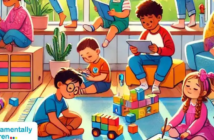As Vice-President and Global Head of Content Partnerships at Twitter, Kay Madati is responsible for leading the teams that develop strategies to exploit content and programming initiatives across Twitter.
And while some might see it as a giant leap — from 140-character messaging platform to global media player — the former BET and Facebook executive said it’s all part of the evolving nature of global media.
“The content/media landscape has been in perpetual evolution, and within it multi-platform consumer-oriented content experiences have become critical to growing fandom, driving community, and igniting passionate conversations in and around publisher content initiatives,” he said. “We see this as a natural extension of our partners’ business models — both on the audience reach value proposition, but also on the monetisation value proposition.”
Traditionally, media outlets have grown alongside the popularity of their content. While in the era of social media, the audiences have come first, and the content has followed. Does this mark a fundamental difference between heritage media and the media of the future — and does it signify how the market for content will develop in the future?
“The challenge isn’t whether ‘if you build it, will they come’ or vice-versa, but rather, ‘How do content providers tell compelling stories that engage audiences or users in a mobile-first continually evolving multi-platform device/platform paradigm?’,” Madati said. “We believe the answer is found in the opportunity to capitalise on innovation and creativity around new distribution formats to significantly enhance and complement traditional content consumption experiences for our audiences and users.”
He added: “Twitter’s partner-led premium content programming efforts are specifically designed to deliver the content that our audience wants to watch and talk about in the moment.”
Twitter currently has over 950 global content partners that deliver live and on-demand video content in sports, live news, politics, entertainment and many other content categories. “As we look to the future, you can expect expanded efforts in new and existing content categories like esports, music, lifestyle, food and culture, to name a few,” Madati said. “I believe we are just scratching the surface on content opportunity, and I’m excited about the uncharted territory that our content business presents for audience and revenue growth for both Twitter and our partners.”
Preferring to “stay focused on our lane” rather than consider any other platforms as direct competition, Madati said that Twitter’s USP is all about “what’s happening now, and everything we do around video partnerships is to serve the public conversation in real-time. If that remains the true north star to our strategies, we will continue to be an indispensable content partner to our publishers.”
After a few years away, Madati said he and his colleagues are “thrilled to be back at MIPCOM” and aside from his keynote presentation, is “hoping to meet with existing and potential partners to discuss what’s next for video partnerships in 2018 and beyond”. He added: “We’ve just started exploring additional discovery opportunities and we’re going to continue to invest in video and are confident in the upside opportunity it presents for audience and revenue growth. I’m proud of all that we’ve accomplished with content in the last year, and I’m even more thrilled about what lies ahead for our content partnerships in the near future.”
Watch Kay Madati’s MIPCOM 2018 keynote in full here:
More in the MIPCOM 2018 Preview magazine; read it in full here.




